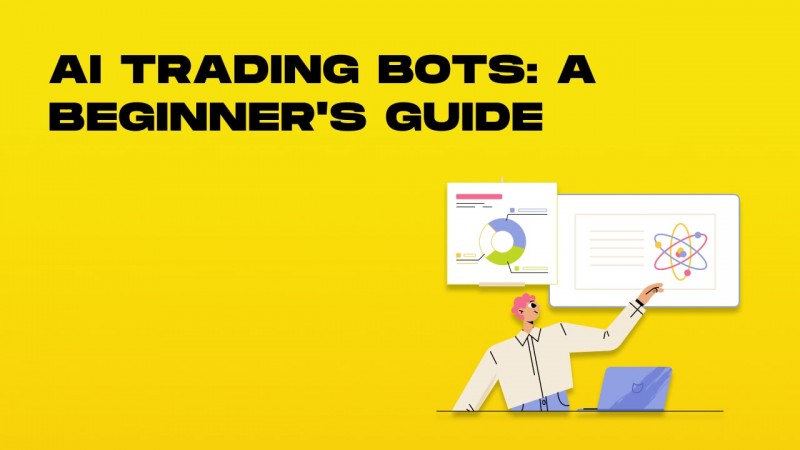20 Top Info To Selecting AI Stock Investing Analysis Sites
20 Top Info To Selecting AI Stock Investing Analysis Sites
Blog Article
Tips To Help Evaluate The Cost And Price Of Ai Trading Platforms That Can Predict Or Analyze The Prices Of Stocks.
The cost and pricing of AI-based stock forecasting and analyzing trade platforms is essential to avoid unexpected charges or hidden costs. Pricing structures vary significantly, and knowing exactly what you're paying for is crucial to making an informed decision. Below are the top ten tips for assessing the price and cost of these platforms:
1. Learn about the Pricing Model
Subscription: Make sure to check if a platform charges fees per month or a year, and what's included with each level.
Pay-per-use : Make sure that the platform charges according to usage (e.g. transactions, requests for data, or forecasts).
Freemium: Find out the extent to which a platform provides a limited free tier and costs extra to access premium features.
2. Compare Pricing Tiers
Overview of features: See what features are offered in each price the tier (e.g., basic, professional, or enterprise).
Scalability: Ensure the pricing tiers align with your needs, whether you're an individual trader a professional, or part of an institution.
Upgrade flexibility: See if your plan can be easily upgraded or downgraded when your needs change.
3. Evaluate Hidden Costs
Data fees: Find out if are required to pay for access to premium data.
Brokerage charges: Determine if the platform charges additional charges for trade execution or integration with brokers.
API usage: Check if there are extra costs to access APIs or high-frequency API usage.
4. Try out demos for free and trial versions
Trial period: Check out platforms that offer a free trial or demo to test out their features.
Examine the limits of a trial trial. Does it offer all features?
No-commitment options: Ensure you can cancel the trial without being charged in the event that the service doesn't meet your needs.
5. Look for promotions and discounts. offers
Discounts on annual plans: Find out for discounts provided by the platform in comparison to the monthly plans they offer.
Referral programs - Check to see whether there are any discounts or credits available for referring new users.
Contact us for bulk or institutional prices if your business is large.
6. How to Evaluate Return on Investment (ROI).
Cost vs. worth: Determine if the platform's features and forecasts are worth the price. Can it save you time or assist you in making better decisions in trading?
Track record of performance Check out the platform's rates of success or user feedback to gain an understanding of the ROI potential.
Alternative costs: comparing prices for the platform with the costs that may be incurred in the event it is not used (e.g. lost opportunities, manual analysis of data time).
Review Policies on Cancellation and Refunds
You should be able to cancel your subscription at any time without incurring penalties or fees.
Refund Policy: Verify if your platform allows the amount back if the subscriptions is not utilized.
Auto-renewal. Find out if the platform automatically renews your subscription. If yes, you'll need to know how to unsubscribe.
8. Review Transparency of Pricing
Clear pricing page: Make sure whether the platform has a pricing page which is detailed, clear and does not contain any hidden charges.
Customer service: If there are any questions regarding pricing or extra costs Contact customer service.
Contract terms: Review the conditions of service to know the long-term commitments and penalties.
9. Compare with Competitors
Features comparison Comparison of pricing and features of the platform with its competitors to ensure you're getting the best deal.
User reviews: Check out user feedback on the platform to determine if it's worth the cost.
Market positioning: Take a look at the pricing and see if you are getting a platform that is compatible with your needs.
10. Examine the Long-Term Costs
Price rises: Find out if and how often the platform increases prices.
Plans that include additional features Decide if you're in need of an upgrade or if the latest features are available in your plan.
Costs of scaling: Make sure the price of the platform is affordable when you expand your data or trading requirements.
Bonus Tips
Try multiple platforms. Examine the performance and value of different platforms by evaluating their capabilities during free trials.
Negotiate prices: If you have a large number of customers or belong to an organization, request discount and pricing that is custom to your needs.
Find free educational tools and sources. Certain platforms offer educational tools or resources for free.
Follow these tips and you'll be able to evaluate the cost, pricing and characteristics of AI platform for trading stocks. A good platform price should be able balance affordability with performance. This will help you get the most out of your trading. Read the top ai stocks for website info including incite, ai stock market, ai stock trading bot free, ai investing app, ai investment app, best ai for trading, best ai trading app, ai trade, ai investing app, ai investment platform and more.
Top 10 Tips For Assessing The Regulatory Conformity Of Ai-Powered Stock Predicting/Analyzing Trading Platforms
The compliance with regulatory requirements of trading platforms using AI to analyze or predict stock prices is an important element. Compliance assures that the system works within the legal frameworks, safeguards the privacy of users, and conforms to the financial laws, which reduces the risk of legal issues or financial sanctions. Here are the top ten suggestions for assessing the regulatory compliance of these platforms:
1. Check your license and registration
The regulatory bodies should ensure that the platform is registered and licensed by relevant financial regulatory authorities (e.g., SEC in the U.S., FCA in the UK, ASIC in Australia).
Broker partnerships: Make sure that the brokers who are integrated into the platform are licensed.
Public records: Visit the website of the regulator to find the platform's registration status as well as any previous violations.
2. Examine Data Privacy Compliance
GDPR when operating in the EU or providing services to users there the platform must comply with the General Data Protection Regulation.
CCPA For Californian users, check compliance with California Consumer Privacy Act.
Policies for handling data. Examine the platform's privacy policy to ensure it clearly describes the ways in which data regarding users is collected, shared, and stored.
3. Evaluation of Anti-Money Laundering/AML measures
AML Policies: Ensure that the platform has AML policies that are robust to stop and detect money laundering.
KYC procedures: Check whether the platform supports Know Your Customer (KYC) that verifies the identity of users.
Monitor transactions: Make sure that the platform tracks transactions in order to identify suspicious activity and notify authorities.
4. Check for the compliance of Trading Regulations
Market manipulation: Ensure that the platform has measures to prevent market manipulation, such as spoofing, wash trading.
Order types: Verify if the platform is in compliance with the regulations for order types (e.g. No illegal stop-loss hunting).
Best execution: Examine to see if the website follows the best execution practices, which ensures that trades will be executed at the cheapest cost.
5. Examine Cybersecurity Compliance
Data encryption: Ensure that the platform is using encryption to safeguard data either in transit or when it is at the rest.
Response to incidents: Verify if the platform has a clearly defined incident response strategy for cyberattacks or data breaches.
Certifications: Determine if a platform has been accredited for cybersecurity (e.g. ISO 27001, SOC 2)
6. Evaluate Transparency and disclosure
Fee disclosure: Make sure the platform discloses all charges that are hidden, as well as any extra fees.
Risk disclosure - Verify that the platform provides clear information on risk. This is particularly important for trading strategies with high leverage or risk.
Performance reporting: Determine if the AI model's algorithms are transparent and accurately recorded.
7. Verify that you are in compliance with international regulations
Trading cross-border: If you want to trade internationally make sure your platform is legal in all jurisdictions.
Tax reporting: Check whether the platform provides tools or reports to assist users to comply with tax regulations.
Conformity with sanctions: Ensure that the platform is in compliance with sanctions and is not allowing transactions or trading with banned entities or countries.
8. Examine Record-Keeping and Audit Trails,
Transaction records: Make sure the platform keeps accurate records of all transactions to ensure audit and regulatory compliance.
Logs of user activities Verify that your platform records all activity of users, like logins, transactions, and adjustments to settings for accounts.
Audit readiness: Ensure that the platform is able to provide all necessary documents and logs in the event of an audit by a regulatory agency occurs.
9. Check for compliance with AI-Specific Regulations
Algorithmic trading regulations: If a platform supports algorithmic trading, be sure that it complies with regulations like MiFID II in Europe or Reg SCI in the U.S.
Fairness and Integrity: Determine whether the platform's AI models are monitored and adjusted to prevent bias.
Explainability - Ensure that the AI platform is able to clearly and concisely explain about AI-driven predictions, decisions and more. in accordance with certain regulations.
Examine the User Feedback and the Regulatory Histories
User reviews: Read reviews from users to assess the reputation of the platform's regulator conformity.
The history of regulatory compliance - determine if the website is known for any past regulatory violations or fines.
Third-party checks: Ensure that the platform is in compliance with the law by checking if it undergoes regular audits by third parties.
Bonus Tips
Legal consultation: Talk to an attorney to make sure that the platform is in compliance with all applicable regulations.
Trial period. Try the trial or demo version of the platform to try out its compliance features.
Customer support: Ensure the platform has support for compliance-related questions or issues.
Check these points to determine the regulatory compliance and security of your rights. Compliance not only lowers the risk of legal violations, but it also helps build confidence and trust in the services of the platform. View the recommended her explanation about chart ai trading for site advice including chart ai trading, ai trading tool, free ai tool for stock market india, ai for trading stocks, ai stock trader, stocks ai, ai stock price prediction, ai trading tool, how to use ai for copyright trading, ai options trading and more.